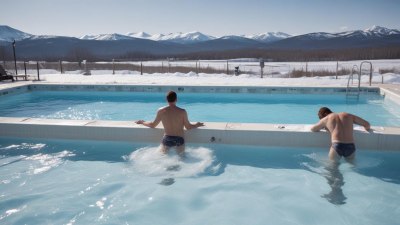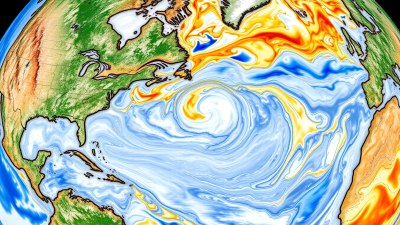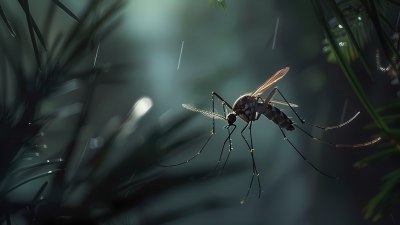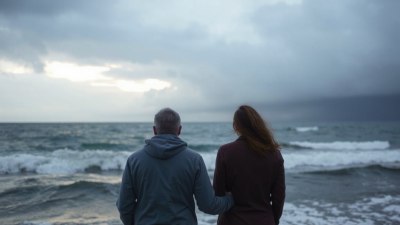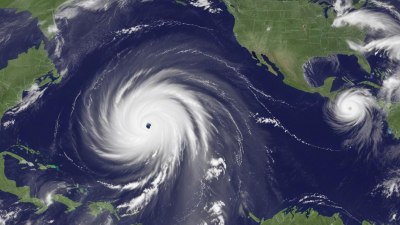Why It Sometimes Snows in the Desert The Rare Cold Fronts
Discover the fascinating phenomenon of snowfall in deserts due to rare cold fronts. Explore why this occurs and its impacts.

When one thinks of deserts, images of endless sand dunes and scorching heat come to mind. However, these arid regions can surprise us, especially during the winter months when something truly extraordinary occurs: snow. While it may seem bizarre, snowfall in deserts has a scientific explanation that involves complex meteorological phenomena. This article delves into the rare cold fronts that can lead to winter snow in places where lush greenery is all but a memory.
The Basics of Deserts
To understand why it snows in the desert, we first need to grasp what constitutes a desert. Deserts are defined primarily by their low precipitation levels, receiving less than 250 millimeters (about 10 inches) of rain each year. While the most common perception is that deserts are hot, this is not always the case. Several deserts, including the Mojave and the Great Basin in North America, as well as the Atacama in South America, can experience extreme temperature fluctuations, especially at night. These temperatures can plunge well below freezing during the colder months, setting the stage for unusual weather events.
Cold Front Formation
Cold fronts occur when a mass of cold air moves into a region, displacing warmer air. This displacement is crucial because it can lead to the condensation of moisture in the air, which can then fall as precipitation, including snow. In winter, especially in the higher altitudes or during specific climatic conditions, this process can lead to dramatic weather changes, even in traditionally arid areas.
Snowfall Events
When a cold front moves into desert regions, the combination of adequate moisture and low temperatures can create perfect conditions for snow. Although it is a rare occurrence, several noted examples showcase how deserts can be blanketed in snow. For example, the Mojave Desert experienced snowfall several times in late 2021 and early 2022 when the temperature dipped below freezing, and moisture was available in the atmosphere. Such events are usually short-lived; however, they create spectacular scenes of snow-covered cacti and vast expanses of white sand.
Microclimates in Deserts
Deserts can often host microclimates due to their topography. Mountains and elevation can lead to localized weather phenomena that allow for snow to fall. The Sierra Nevada mountain range, for instance, creates a rain shadow effect wherein one side receives ample rainfall while the other side remains dry. These mountainous regions can maintain cooler temperatures, and when cold fronts sweep through, they can experience winter weather while their desert counterparts remain dry.
The Role of Elevation
The elevation of certain desert areas plays a significant role in whether they will see snowfall. Deserts that are situated at higher altitudes, such as the Colorado Plateau, can experience winter conditions more typical of mountainous regions. As elevation increases, temperatures typically decrease. This fact means that when cold fronts approach these higher desert regions, the likelihood of snow increases significantly compared to lower-lying, hotter desert areas.
Noteworthy Desert Snowfalls
Several historical instances of snowfall in desert areas highlight just how rare and fascinating these events can be. One of the most memorable occurred in February 1979, when the snow fell on the deserts of Southern California, transforming the landscape into a surreal winter wonderland. The snow was reported in areas such as Palm Springs and the Coachella Valley, where normally, winter temperatures hover well above freezing.
Another notable example is the winter storm in January 2005 that brought snow to the Las Vegas Valley in Nevada. Residents were astounded to witness flakes falling in a city famed for its arid climate. The storm caused the otherwise vibrant city to momentarily take on the appearance of a winter paradise, with casinos and palm trees silhouetted against a backdrop of white.
Impact on Desert Ecosystems
Snowfall in deserts can have significant effects on local ecosystems. For many desert plants and animals, the unusual precipitation can provide much-needed moisture that sustains them through dry months. For instance, many desert plants have adapted to conserve water, and a timely snowfall can hydrate the soil and promote growth, leading to a rare bloom of flowers. Animals, too, may have adaptations that allow them to utilize the moisture from melting snow for hydration.
Climate Change and Its Effects
Climate change is affecting weather patterns across the globe, including desert conditions. While we often hear about warmer temperatures and drought conditions, it's crucial to understand that climate change can also lead to increased variability in weather, including extreme cold fronts. This phenomenon could potentially increase the chances of unexpected snowfalls in deserts as we move forward, disrupting traditional weather patterns and encouraging unprecedented snowfall events.
While snow in the desert might seem like an oxymoron, it occurs under specific and rare conditions that highlight the complexity and variability of our climate. As scientists continue to study these phenomena, they remind us that the natural world can surprise us, even in the most unlikely places. Understanding these rare events can lead to greater appreciation for the intricate systems that govern our planet's weather.




